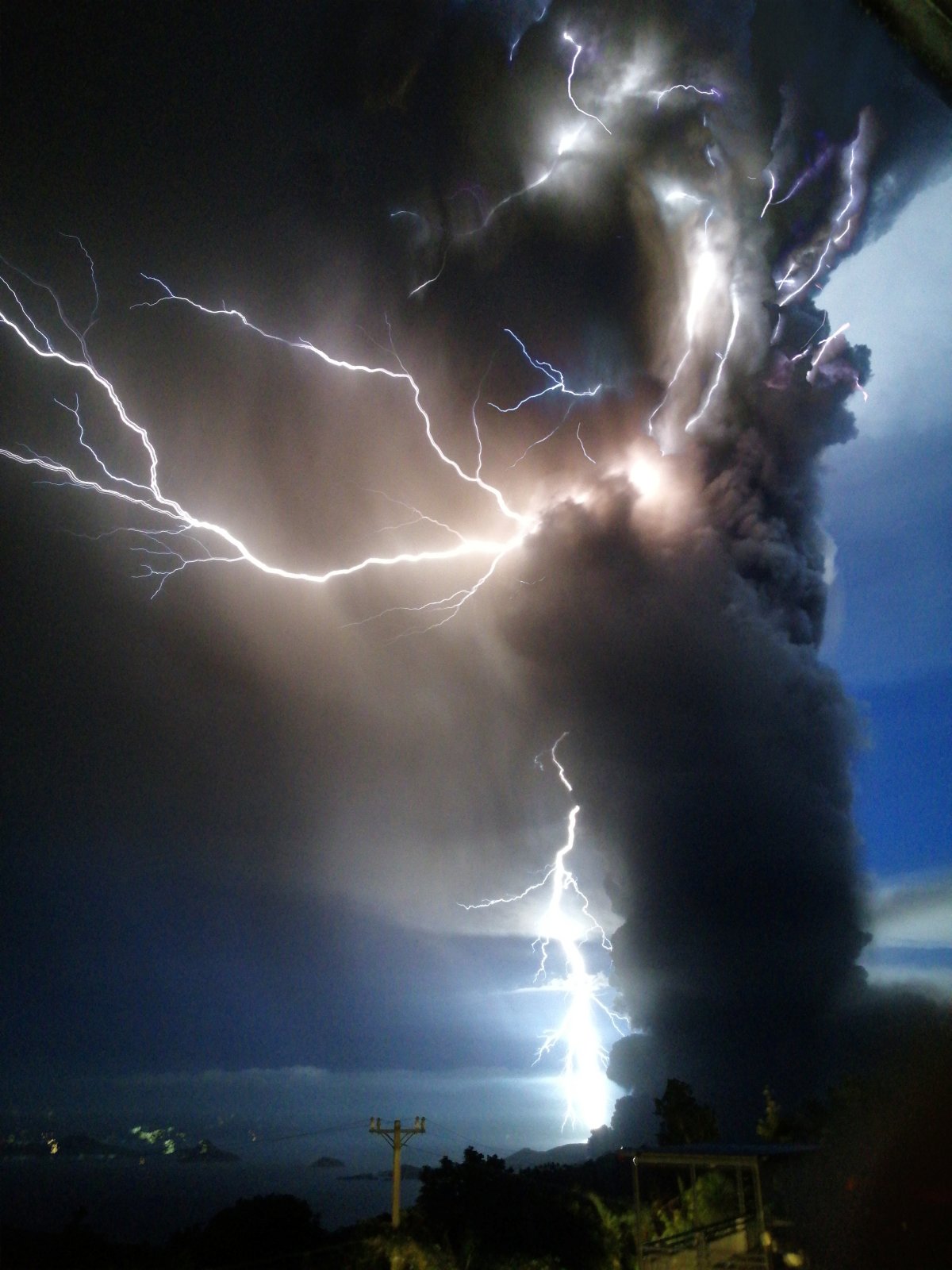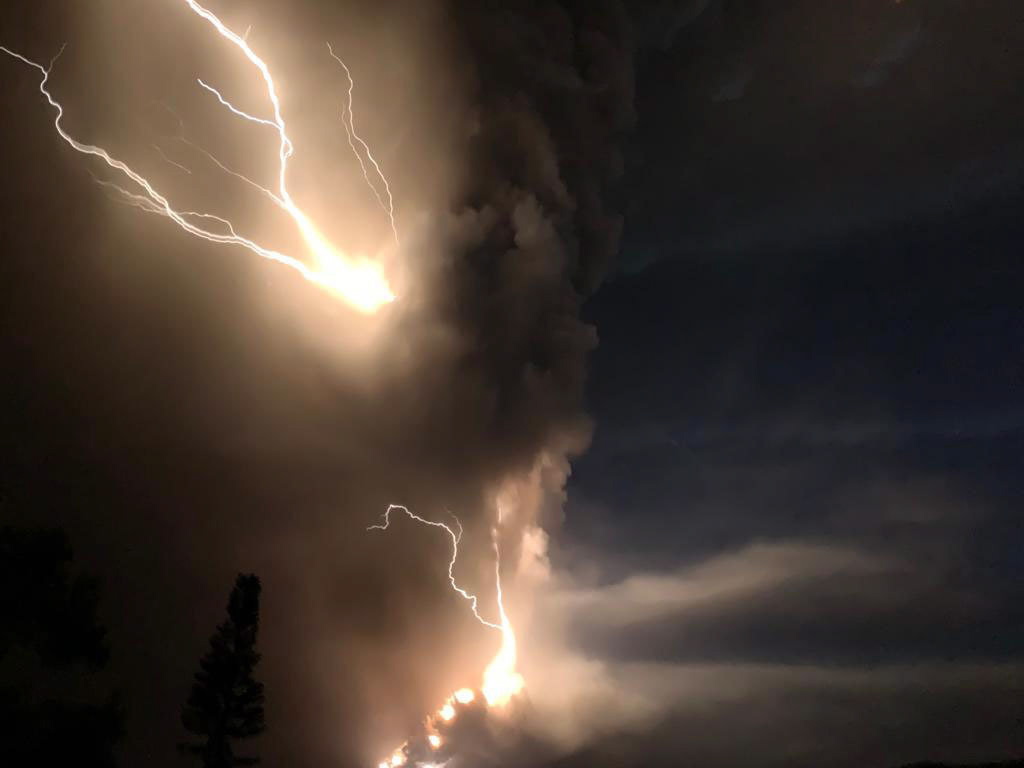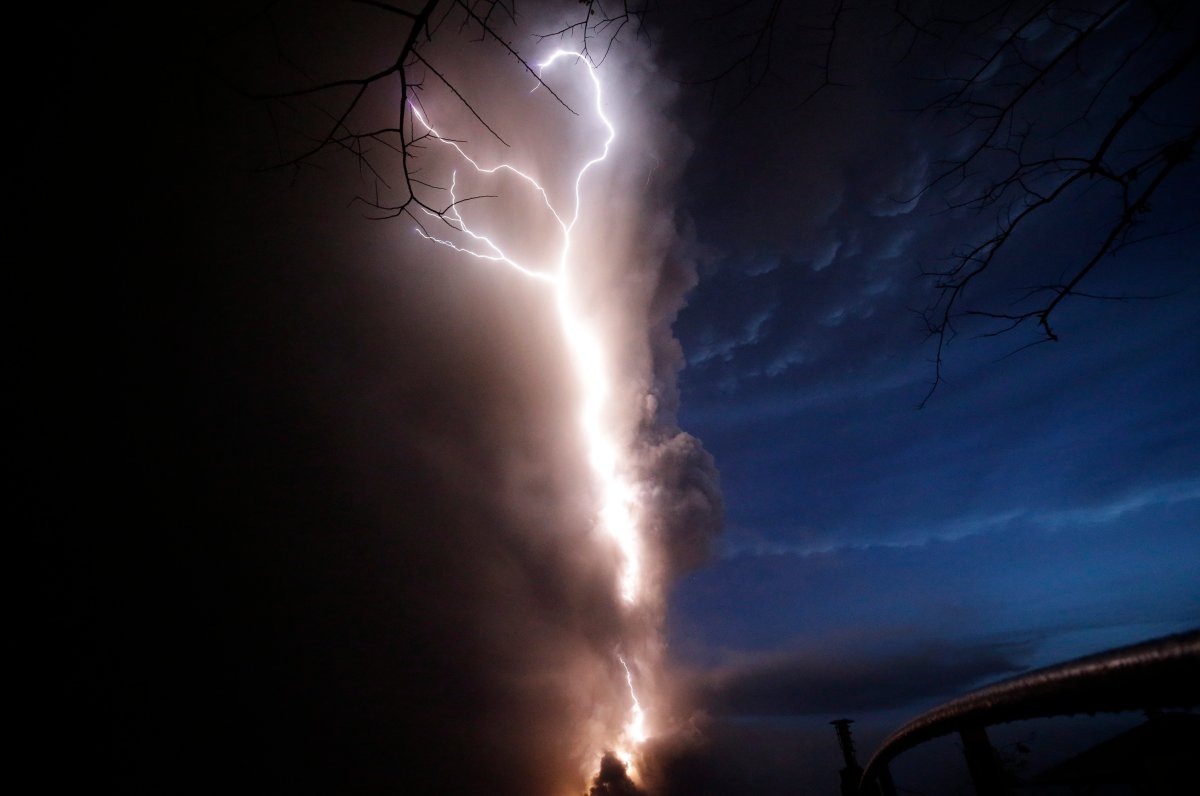As the Taal volcano erupts near Manila, Philippines, blanketing the surrounding island of Luzon in thick plumes of ash and sending streaks of lightning into the sky, volcanic experts break down the science behind the phenomenon.

Not all volcanoes emit lightning when they erupt, but the spectacle, they say, is hardly rare.
Volcanic lighting is “actually pretty common,” particularly with eruptions that produce a lot of ash, said Melanie Kelman, a volcanologist at Natural Resources Canada.
According to Kelman, the phenomenon begins when water interacts with magma in an explosive fragmentation of hot rock under Lake Taal.
The rocks, which erupt as a result of the explosion, break into even smaller particles known as volcanic ash.
“The finer the ash, the more likely you are to get lightning, she said. “When an explosive volcanic eruption produces an ash column, collisions between ash particles (which may be thousandths of a millimetres in size) produce friction, which generates electrical charge.”
A turbulent column of volcanic ash rises, creating a plume full of charged particles that eventually plummets, covering the ground in ash. Particles crash into one another, illuminating the skies with hazardous lightning.
Volcanic lightning is a lot like a thunderstorm
“You have to imagine that obviously there are millions of billions of particles which are ejected in these clouds, that carry some charges with them,” said another volcanologist, Corrado Cimarelli.
He said electrical charges dispatched through static electricity are the essence of volcanic lightning.
Cimarelli, who teaches physical and experimental volcanology at Germany’s Ludwig Maximilian University of Munich, told Global News the process, called “tribal electrification,” is similar to the way lightning forms during thunderstorms.
“The reason why they actually charge is because they collide against each other,” said Cimarelli.
“If you have a series of particles which are grouped together and they have a specific polarity — a positive or negative, and they are distant enough to basically break the electrical insulation of the air in between — then you will have a discharge happening.”

According to Cimarelli, these charged particles are then lofted up into the atmosphere at high altitudes — about six or 10 kilometres in in the case of the Taal volcano — where they then freeze and circulate inside the plume.
The ice that forms is “actually the carrier of charges into the thunderstorms,” he said.
But the explosiveness of the eruption, the size of the ash, the presence of ice particles, and the water content and temperature of the volcanic plume all play roles in the number and size of lightning discharges.
“There is some evidence that eruptions with more water produce less lightning — this may be because wet eruptions tend to be more explosive, and more explosive eruptions may scatter ash particles over a larger area, resulting in fewer ash particle collisions,” said Kelman.
The temperature of the environment wouldn’t matter, but the amount of water available has the potential to create larger explosions.
“If a volcano is near or in the ocean, if there is a lake in a volcanic crater, if there is a lot of groundwater, if there is a lot of water dissolved in the magma, or if there are glaciers on a volcano that can be melted to produce water, then an eruption may be more explosive than it would have been otherwise,” she said.
“More water tends to lead to greater explosivity, resulting in finer ash.”
Not your typical campfire ash
Since the volcano’s eruption, Filipino authorities have begun evacuating thousands of people near the capital of Manila, going so far as to urge a full evacuation.
The Department of Science and Technology at the Philippine Institute of Volcanology and Seismology raised the alert status to Level Four and urged a total evacuation of Taal Volcano Island within a 14-kilometre radius from the volcano’s main crater.
Civil aviation authorities were advised to avoid flying near the volcano due to “airborne ash and ballistic fragments from the eruption column.”
The warning echoed the 2010 eruption of the Eyjafjallajökull volcano in southern Iceland, which saw 800 people evacuated from the region and the closure of European air spaces for several days thereafter.
Kelman said ash is more volatile than it appears, and is actually shattered volcanic rock.
“It’s not like ash from a campfire, which is soft and organic and it dissolves. Volcanic ash is like sand. So tiny particles of it are a hazard to aircraft … because they can sand-blast any surface, including the windshield or the control surfaces,” said Kelman.
“The ash particles can go into any part of the airplane or like instruments for navigation and whatnot. And then really critical is that the ash can go into the engine and melt and then be re-deposited on the the turbine blades. So it can cause jet engines to stall.”







Comments